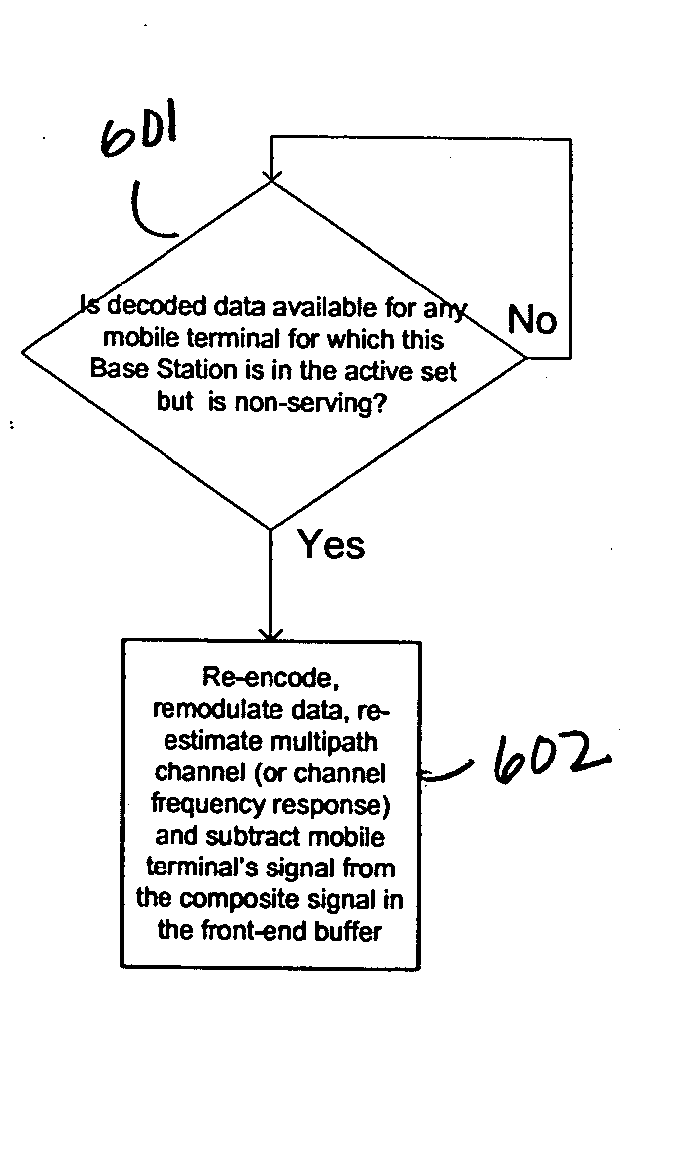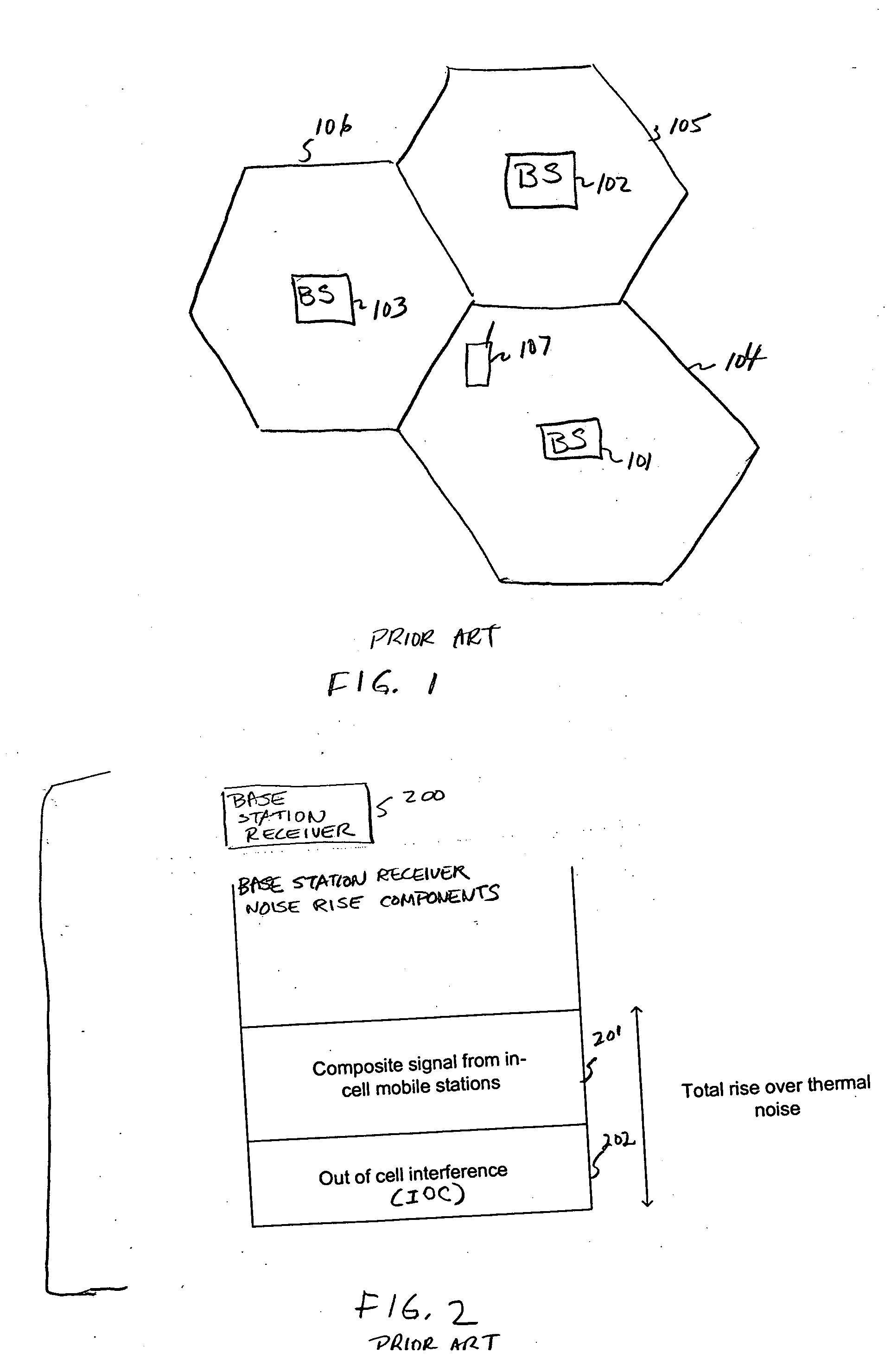Method to control the effects of out-of-cell interference in a wireless cellular system using backhaul transmission of decoded data and formats
a wireless cellular system and backhaul transmission technology, applied in the field of wireless communications, can solve the problems of increased high signal-to-noise ratio, and achieve the effect of increasing the likelihood of being successfully decoded, and increasing the signal-to-noise ratio
- Summary
- Abstract
- Description
- Claims
- Application Information
AI Technical Summary
Benefits of technology
Problems solved by technology
Method used
Image
Examples
Embodiment Construction
[0019]FIG. 4 shows a wireless communications system 400 in which the active set for a mobile terminal 401 includes base stations 402, 403 and 404. Base station 402 is the serving base station and base stations 403 and 404 are non-serving base stations. For illustrative purposes, serving base station 402 and non-serving base station 403 are connected to the same Radio Network Controller (RNC) / Base Station Controller (BSC) 405 and non-serving base station 404 is connected to RNC / BSC 406. RNC / BSC 405 and RNC / BSC 406 are connected to a common Packet Data Switching Node (PDSN) / Mobile Switching Center (MSC) 408.
[0020] In an embodiment of the present invention, when data that has been transmitted by mobile terminal 401 is successfully decoded by serving base station 402, that decoded data and the transmission format of that successfully decoded data is sent over the backhaul to the non-serving base stations 403 and 404 in the active set of mobile terminal 401. Specifically, the modulation...
PUM
 Login to View More
Login to View More Abstract
Description
Claims
Application Information
 Login to View More
Login to View More - R&D
- Intellectual Property
- Life Sciences
- Materials
- Tech Scout
- Unparalleled Data Quality
- Higher Quality Content
- 60% Fewer Hallucinations
Browse by: Latest US Patents, China's latest patents, Technical Efficacy Thesaurus, Application Domain, Technology Topic, Popular Technical Reports.
© 2025 PatSnap. All rights reserved.Legal|Privacy policy|Modern Slavery Act Transparency Statement|Sitemap|About US| Contact US: help@patsnap.com



